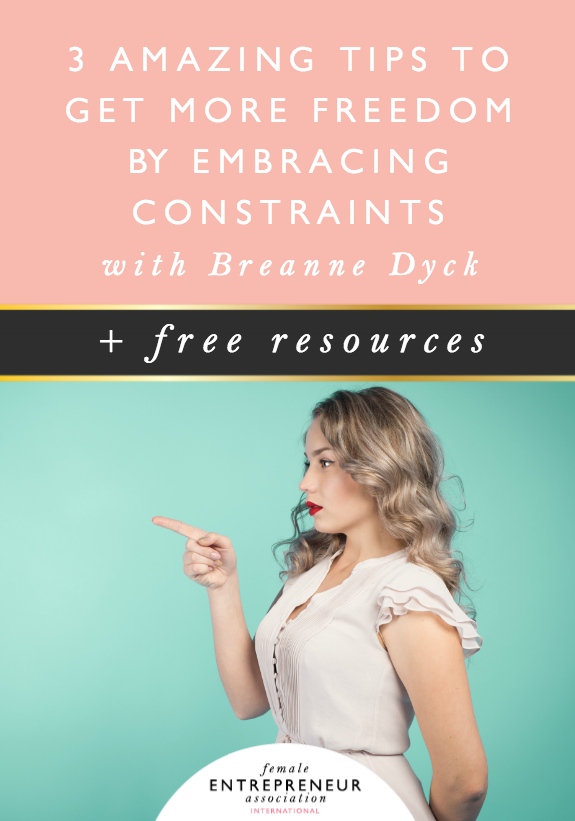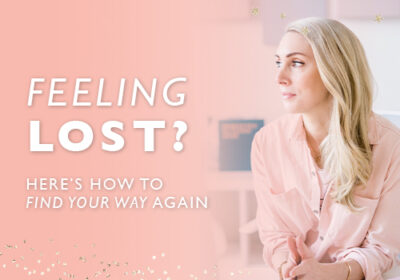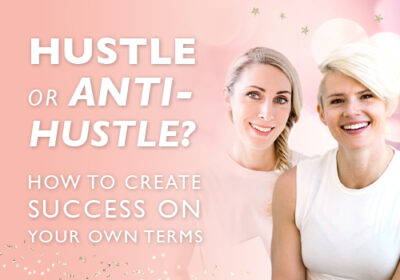
We all want to build a bigger audience, get more clients, make more money & really get our amazing message out there into the world – but it’s really tough to know what actionable steps we can really take in order to reach our goals.
What steps can we take in everyday life in our business that will enable us to make better connections, save time and make our lives easier, whilst at the same time making us more money and expanding our audience?
Well, that’s what this week’s 10 Minute Masterclass is all about, as we are joined by the wonderful Breanne Dyck who shared with us her amazing top tips for how creating your own constraints in your business can really help you stay focussed & save you time, as well as some great tips when it comes to getting new clients from your existing ones.
In this masterclass Breanne shares:
- What you can learn from child’s play
- The amazing power of introductions vs. referrals
- How constraints can keep you focussed & save you time
- + lots more!
Have a watch below…
GIVEAWAY: Make sure you leave a comment below and share what constraints you are going to put in place to help you in your business, and be in with a chance of winning a 6 month pass to the Members’ Club!
about Breanne
Breanne Dyck is a leading consultant helping businesses that offer online training to build their impact, their team and increase their revenue by integrating their management, learning and product strategy.
Get Breanne’s free flowchart template here >>
Get Breanne’s “Create Action With What You Know” Freebie >>
the Breakdown
Here’s a breakdown of what Breanne shared in the video above…

WE CAN LEARN A LOT FROM CHILDREN
Researchers have shown that children are far less inhibited playing in a playground that has a physical boundary around the outside (in this case a fence) rather than when they’re playing in a huge, completely open playground or park with no boundaries, where it turns out they feel a lot more inhibited. The reason for this is that in the experiment conducted by researchers, having these boundaries and constraints allowed the children to know where they could safely go, it gave them a sense of freedom, because they knew exactly what & where their space was to explore.
It’s a completely subconscious reaction to boundaries that humans experience, and we can take this natural reaction and apply it practically in business to benefit us. Breanne shares more in the video.

INTRODUCTIONS ARE POWERFUL
Referrals are a great way of getting new clients on board in your business, but often they aren’t the best way. Introductions can have a more profound impact on your business than referrals can.
The difference is quite subtle, a referral can often be like “Hey, you should go and work with Breanne, she’s great” where as an introduction can be more like, “You should get to know Breanne because I think you’d hit it off”, referring you to a specific person or people. The idea of shifting to introductions is because they have more constraints built in, where referrals don’t. Referrals are very broad and open, they rely on putting out a message into the world, hoping it’s the right message and then waiting for people to get in touch. Whereas introductions are so much more specific and direct to a particular person or group of people.
You can put constraints into your business, for instance when you’re coming to the end of working with a client, ask them who they might be able to introduce you to. Who do they know who you might make an amazing connection with? Having these constraints in place, where you always repeat them with every client, enables you to have more structure and will ultimately help save time & create more meaningful connections.

USING CONSTRAINTS TO BUILD BETTER EXPERIENCES
How can you create more constraints that make your life easier, giving you more freedom and also give your audience more freedom?
One of the most important things to remember when you’re building a membership site or creating a program or making a course, is that it doesn’t matter what you’re teaching your audience, the important thing is what your viewer can do with what they’ve learnt from you.
If you figure out what you want your audience to do with what you’re teaching them, you’ll be able to align all your teachings with those end goals. And if you find yourself adding content or adding more tasks that don’t resonate with those goals that you want your audience to put into action afterwards, then you don’t need to include that content.
If you do this you’ll probably find that you have more time on your hands and you’re wasting less energy. Because if the information you’re adding to your course/seminar/masterclass doesn’t serve your audience (because you’ve asked yourself the question “Does this help my viewer to do what I want them to do with this?”) then why bother including it?
the challenge
Take 10 minutes out of your day to really consider what constraints you can implement in your business that will help add more structure, save you time & hopefully get you more introductions (and hopefully make some too!)
the giveaway
Comment to WIN a FREE 6 Month Members’ Club Pass
One lucky winner will win a FREE 6 Month FEA Membership! This offer is open to current members too :)
To Be Entered to Win: Leave a comment below sharing what constraints you are going to put in place to help you in your business.
See you next week for another 10-Minute Masterclass!
Carrie xx
P.S. If you’re not already a subscriber, sign up below so you don’t miss next week’s Masterclass!





